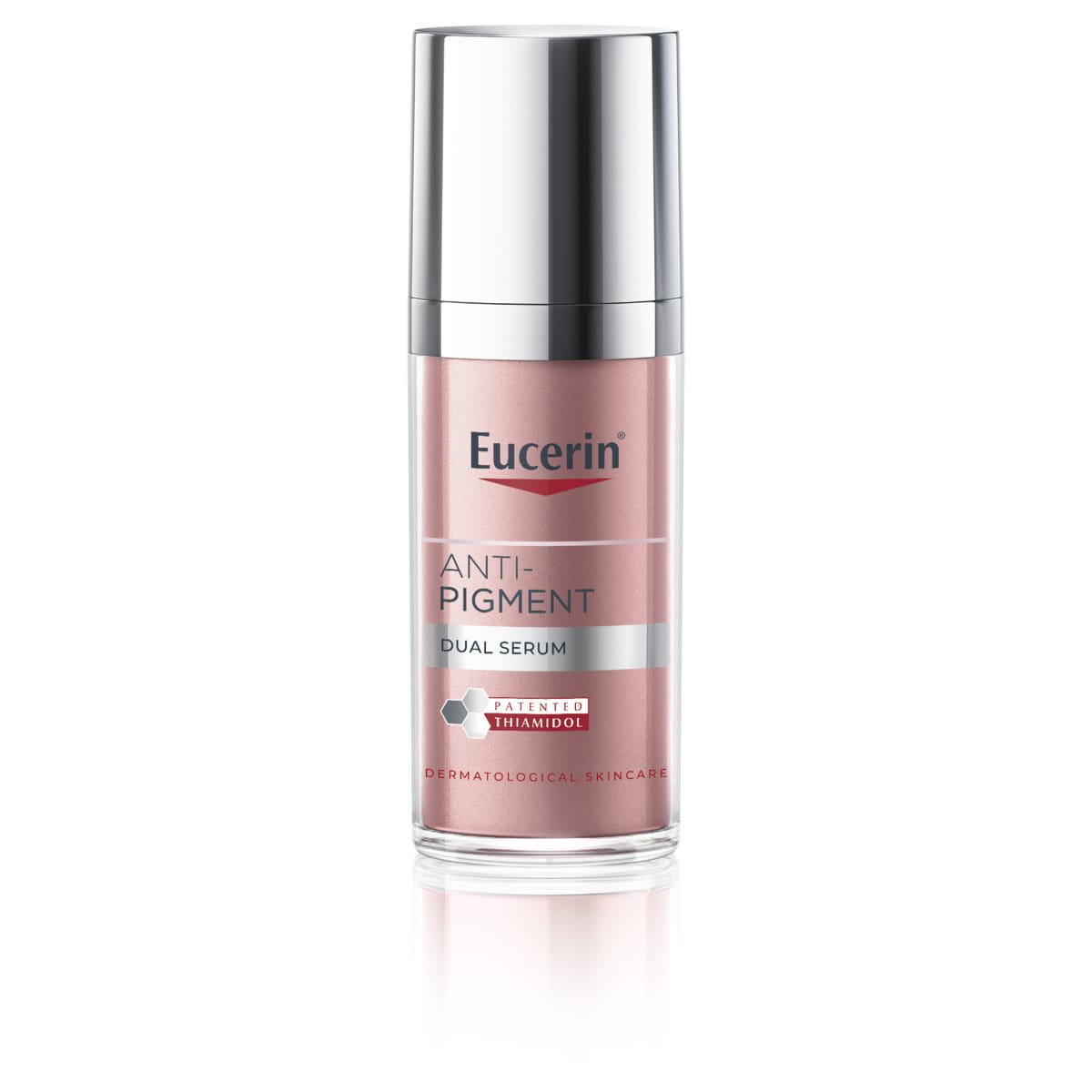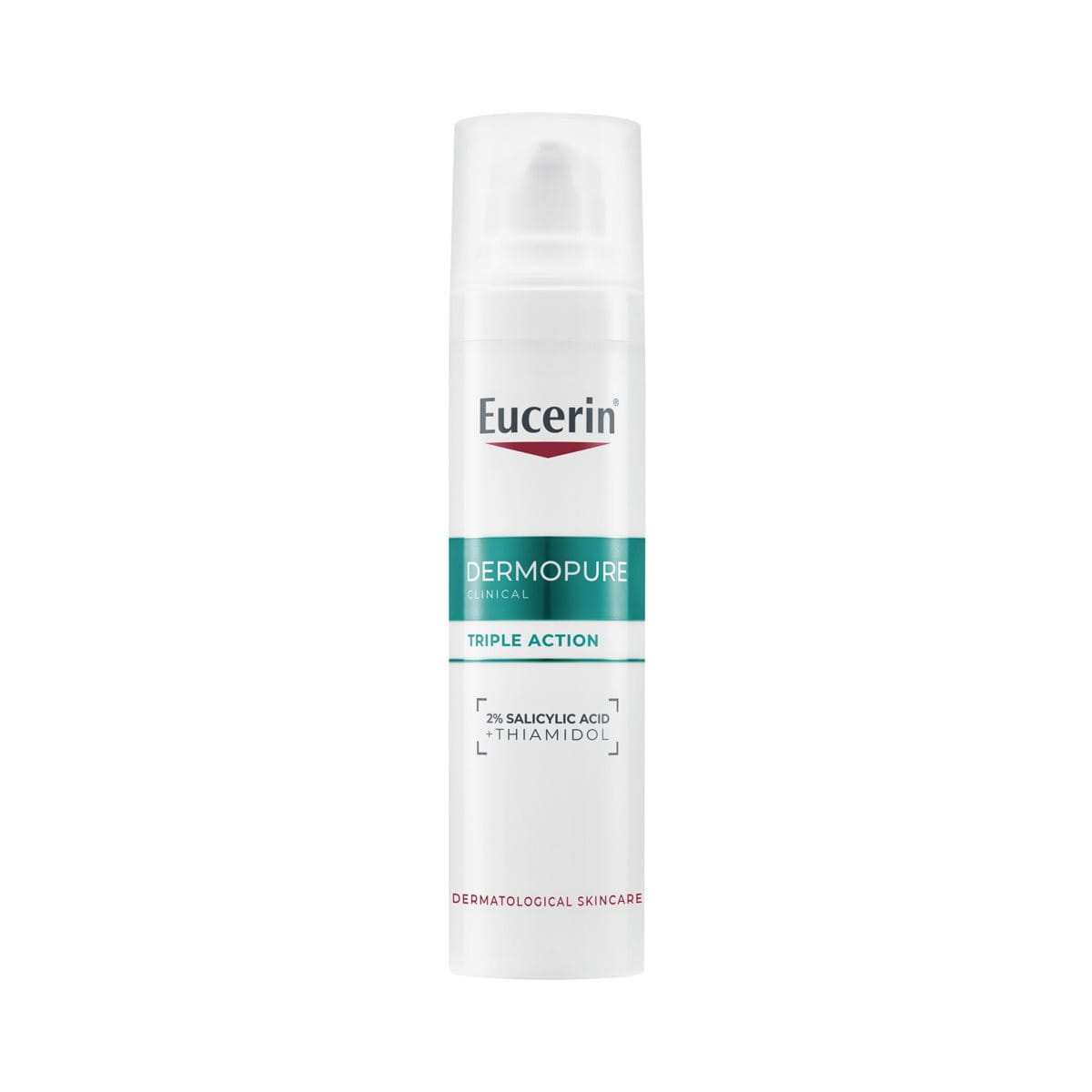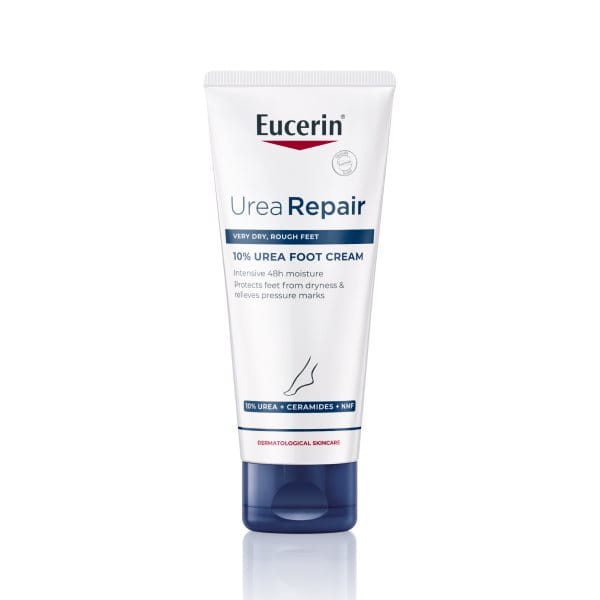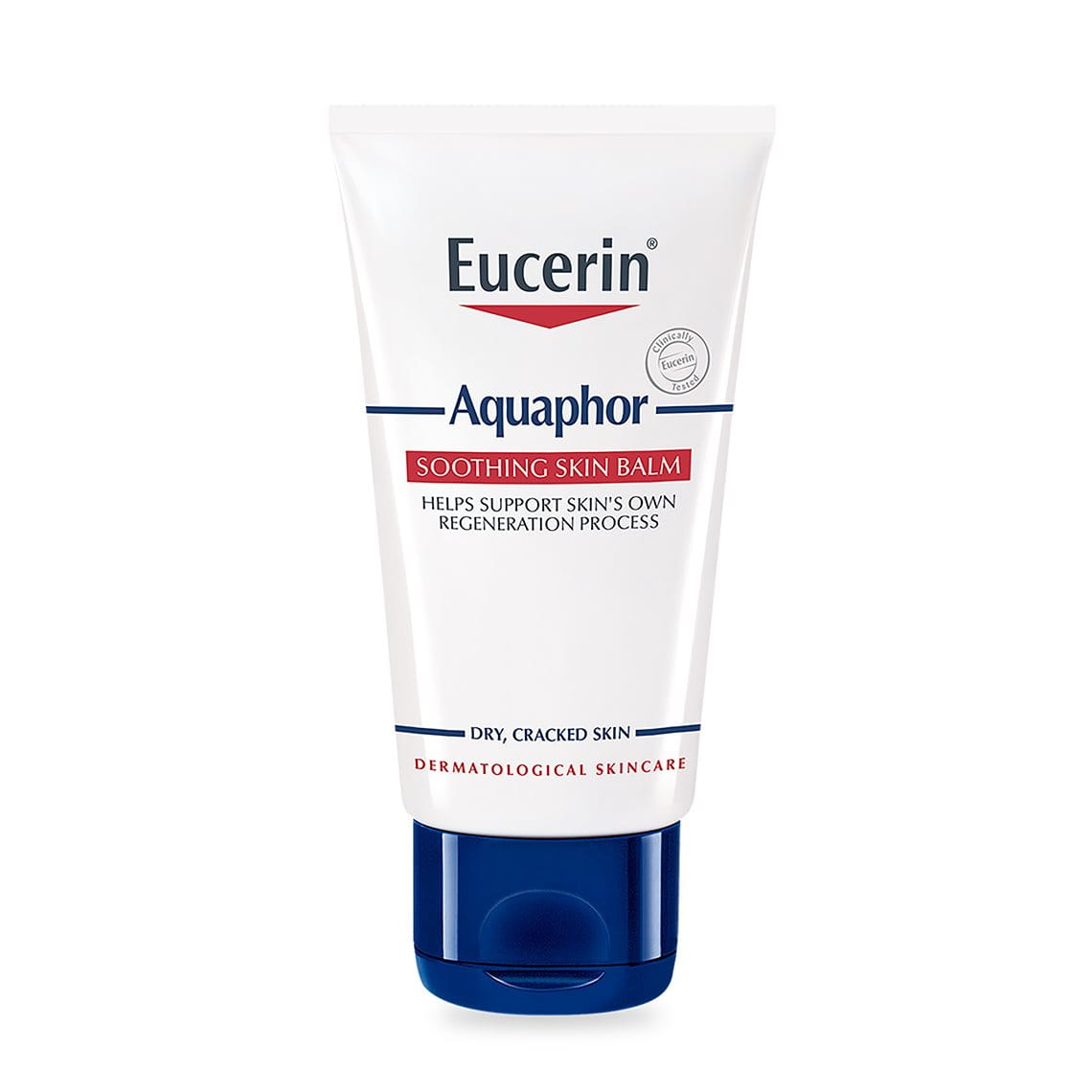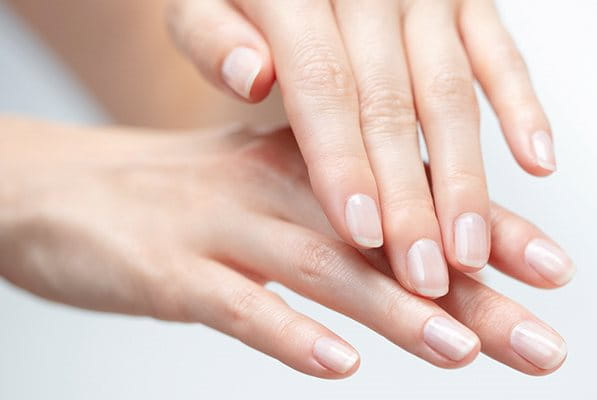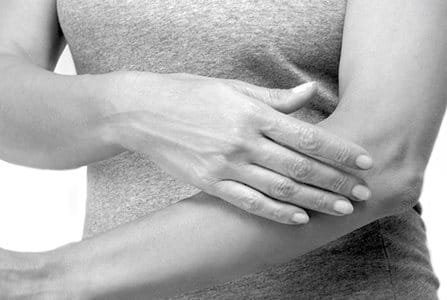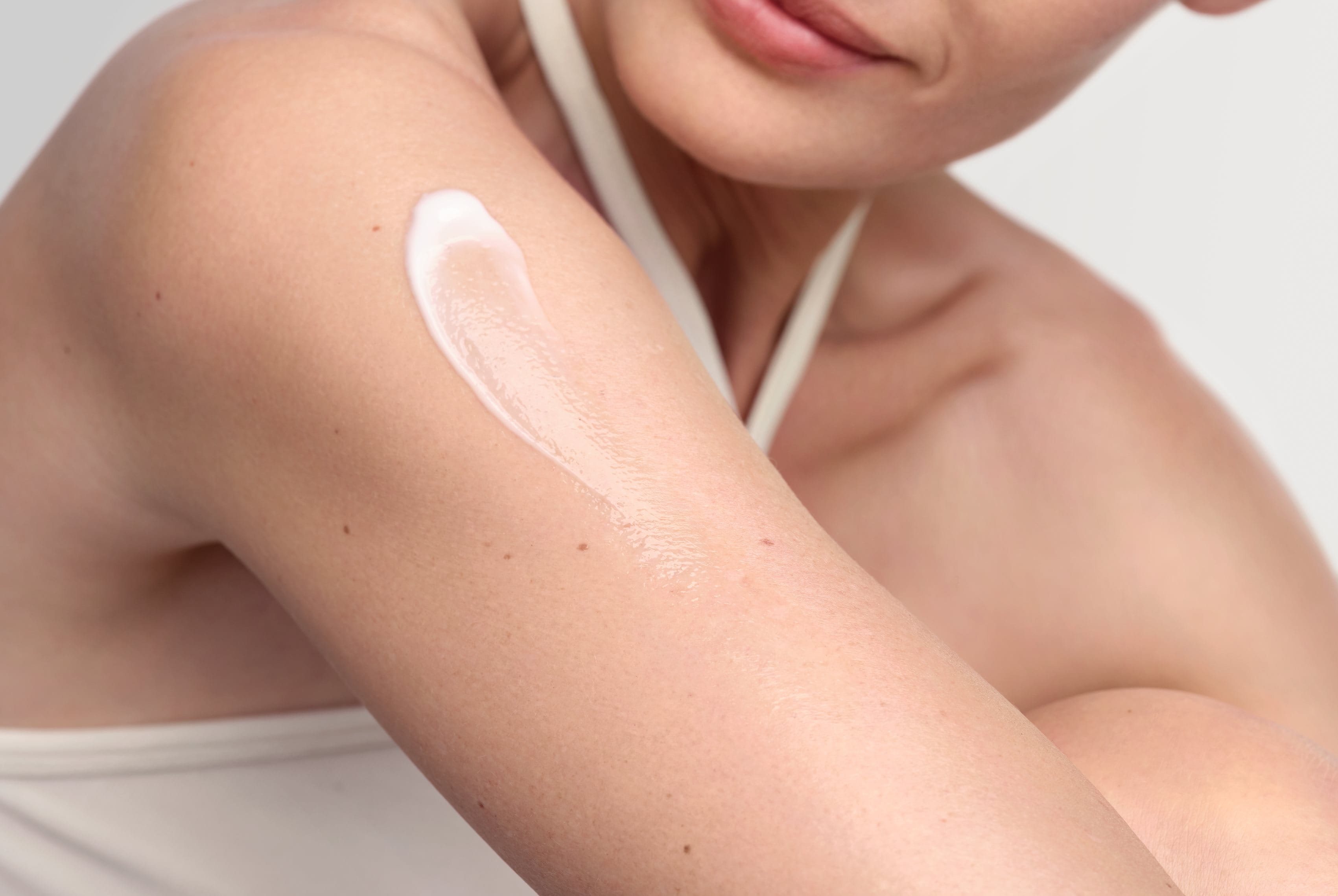Dry skin on the feet can be an indication of insufficient hydration and is characterised by itchy, red, and inflamed skin over the feet, heel, and toes. It can be caused by several factors which leave our feet struggling to hold onto moisture or receive it in the first place. Dry cuticles on the toenails can also be an issue.
Learn more about what causes dry feet, how to reduce the symptoms and prevent your feet from becoming dry again.
What causes dry or crusty feet?
Early stages of dry feet will likely involve flaking, with later stages leading to hardened callouses overtime. Fine lines and cracks can also be present and deepen when left untreated, leading to bleeding in severe cases.

Whilst hygiene can play a role, over-washing can also trigger dry feet, due to the irritation of soaps and detergents and the stripping effect of exposure to hot water.
Individual skin types will impact how dry the skin on your feet is. As we age our skin also becomes thinner and less elastic. On our feet the fat pad that protects the sole of our foot also becomes thinner, resulting in increased skin pressure which causes a build-up of dry damaged skin.
Dry skin on feet and toes can occur for a number of reasons including reaction to topical irritants, climate, diet and physical stress.
- Walking barefoot: When you walk without sufficient cushioning, you are putting your feet through extra pressure and friction, which can cause calluses to form over time. The lack of barrier between the feet and external elements also allows moisture and oils to escape more easily.
- Climate: In climates with low humidity, moisture can get evaporated from the skin, causing feet to become dehydrated. Similarly, hotter climates may increase chances of dehydration which can deplete moisture from the body and feet.
- Diet: Diets lacking in specific nutrients may lead to dehydration of skin and feet. B vitamins, for example, are important for our skin health and structure, meaning that deficiencies in these vitamins can lead to dryness and flaking of skin on the feet.
- Misfitting shoes: Ill-fitting shoes may put pressure on feet or cause chafing. This can lead to blisters, corns or calluses as well as strip the protective barrier of the feet, resulting in a dry or rough texture.
- Exposure to hot water: Like our face, hot water can be stripping to feet as well, leading to a damaged skin barrier and failure to adequately hold on to skin moisture.
- Excessive use of soaps and detergents: These products strip moisture from your feet and, when used in excess, can also damage the moisture barrier.
- Topical cosmetics: These might cause irritation, causing a moisture and oil imbalance on the skin of your feet. Over time your feet might struggle to regain this balance.
- Ageing: Decreased circulation, thinning skin, and drop in oil production all come with ageing and can also make moisture maintenance harder for our skin.
- Smoking: Cigarettes leads to blood vessel constriction and consequently, a decrease in blood circulation. This might prevent adequate nutrients and oxygen from reaching the feet to keep them hydrated and healthy.
Associated conditions
Health concerns like athlete’s foot, diabetes or thyroid disease could be another explanation for dry skin on feet. Blistering can indicate athlete's foot and would need specific treatment. Reduced sensation, on the other hand, is linked to diabetic dry feet and would require a different treatment.
An underlying skin condition may be causing your dry feet, in which case it is always advisable to get them checked out by your doctor or podiatrist. Dry feet could be a symptom of one of the following:
- Athlete’s foot: a fungal condition which causes an itchy or burning rash and peeling of skin on your feet
- Eczema: a common skin complaint with over seven different types that cause the skin to become itchy, inflamed or have a rash like appearance
- Psoriasis: an autoimmune disorder often associated with a red, scaly rash
- Hypothyroidism: a thyroid disorder which can cause dry and scaly skin on your body and feet
- Diabetes: a metabolic disease which can result in very dry, peeled and cracked skin in the feet
- Dietary deficiency: certain conditions such as Crohn’s disease or Celiac disease may cause the body to be deficient in certain essential fatty acids and vitamins causing dry, flaky skin
Dry feet and diabetes
Since diabetes makes it harder for the body to retain moisture or produce sufficient oils, it can often cause dry feet in those who suffer from it. Diabetes also reduces nerve function, causing reduced sensation in the feet.
If left untreated, cracks can develop, making the condition harder to reverse. If you are someone who suffers with diabetes, regular care using foot moisturiser as well as consistent inspection will help you to avoid diabetic dry feet. Eucerin feet products for dry skin are formulated to be suitable for treating dry feet from diabetes.
Risk factors that are associated with dry or crusty feet include age or related illnesses, such as diabetes or thyroid disorder. This condition also has associations with eczema, so it is important to consider holistic approaches alongside your direct treatment.
Dry feet treatment
The best way to get rid of dry skin on feet is with hydration. You’ll want to supply your feet with plenty of moisture which can be locked in without evaporating. Ointments or creams work well as they are thicker, so will evaporate slower and get more moisture into the skin.
Foot cream for dry skin
The Eucerin UreaRepair Plus 10% Foot Cream helps hydrate dry feet whilst being fast absorbing and comfortable for day-to-day use. It will feel light on the skin without leaving a greasy residue. It’s formulated with ceramides and urea to help add moisture and help feet hold onto it for longer.
Foot foam for dry skin

The UreaRepair Foot Foam is made with similar active ingredients to add hydration whilst reducing moisture loss. It offers an ultra-light application which intensively moisturises to revitalise hardened skin. It also offers quick absorption and a non-sticky finish.
Both our Urea Foot Cream and Foot Foam are suitable for helping manage skin conditions such as xerosis, psoriasis and especially dry feet in diabetes.
Balm for cracked heels
The Eucerin Aquaphor Soothing Skin Balm creates a barrier between your skin and outside elements to offer a layer of protection whilst locking moisture in. Perfect for dry, very dry or cracked skin, it will help regenerate and restore your feet.
This water-free ointment is easy to apply and massages gently into your feet, protecting the skin for long periods. It’s great for use in conjunction with the UreaRepair Foot Cream or Foot Foam to help prevent evaporation of moisture due to a damaged skin barrier.
Exfoliating dry skin on feet

If you have developed hardened skin or calluses you might want to remove these first so that the foot moisturisers can penetrate the skin. You can do this by exfoliating feet which can easily be done at home using mostly household items.
Whilst regularly moisturising feet will help return them to their optimal health, exfoliation can certainly help speed this up. Hardened and cracked skin will start to act as a barrier, stopping topical products from getting effectively absorbed.
Exfoliating the dead skin away creates a clear surface to later your foot creams onto, so they can soak deeper into the skin and have a greater impact.
Here’s how to effectively exfoliate dry feet:
- Start by soaking feet in warm soapy water to soften and prep skin. You could add epsom salts to help with this whilst also getting a boost of magnesium. Let them soak for 10-15 minutes to help loosen as much of the built-up dead skin as possible.
- After patting your feet dry, go in with a foot scrub which contains some sort of abrasive that is suitable for dead skin such as salt or sugar. Use circular motions to gently remove softened dead skin, before rinsing away and patting dry again. Be sure to work around the whole foot as people with dry feet often have dry skin on toes as well.
- Once the softer dried skin is removed, you may want to go in with a pumice stone to get to the tougher areas. This may take longer but make sure you are patient and don’t scrub too hard as damaging the healthy skin could worsen the issue.
- Be sure to follow up with a nourishing foot cream for dry skin to replenish any lost hydration and stop the problem from coming back. Ensure the foot moisturiser used is formulated for dry feet and reapply as necessary.
How to prevent dry feet
Equally important to treatment is prevention of the issue recurring. You’ll want to eliminate any factors which could be causing your dry feet symptoms.
- Check your shoes: check your shoes fit adequately and aren’t putting pressure on areas of your foot. Sometimes you may need to buy differently sized shoes or add an insole to cushion the foot and prevent discomfort.
- Check your socks: ensure you are wearing good quality, breathable socks which you change regularly. Wearing socks which you have sweated in will trap moisture and bacteria around your feet which could lead to infection.
- Keep consistent: If you know you suffer from dry skin on feet, ensure to continue treating them with foot moisturisers even when the problem goes away, as this will be the best way to prevent it coming back.
- Drink water: drinking plenty of water will eliminate general dehydration as a potential cause for the problem. A humidifier can also help to add moisture to particularly dry environments which can help dry skin keep hydrated.
- Don't scratch: though it may be tempting, try not to scratch your feet as this can worsen the issue. It could spread bacteria to different areas and make the problem longer lasting, more severe or more likely to return.
What happens if dry feet are left untreated?
Dry or crusty skin can eventually lead to hardened cracks which are more difficult to treat. If left longer, some cases can lead to calluses or even bleeding, which can increase the likelihood of infections. Though it shouldn’t cause health issues it can cause pain and discomfort over time and get increasingly severe and harder to treat.
Don’t forget that aside from being a condition in itself, dry or crusty feet can also be a symptom of a more serious health problem. It is therefore important to see a doctor if the issue persists, to find out if it is indicative of other underlying health issues.
Our brand values

We deliver a holistic dermo-cosmetic approach to protect your skin, keep it healthy and radiant.

For over 100 years, we have dedicated ourselves to researching and innovating in the field of skin science. We believe in creating active ingredients and soothing formulas with high tolerability that work to help you live your life better each day.

We work together with leading dermatologist and pharmacist partners around the world to create innovative and effective skincare products they can trust and recommend.
